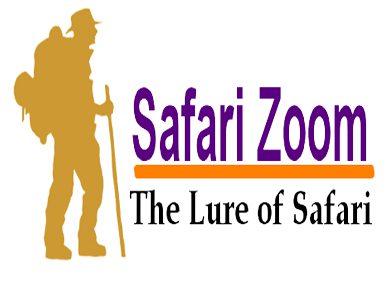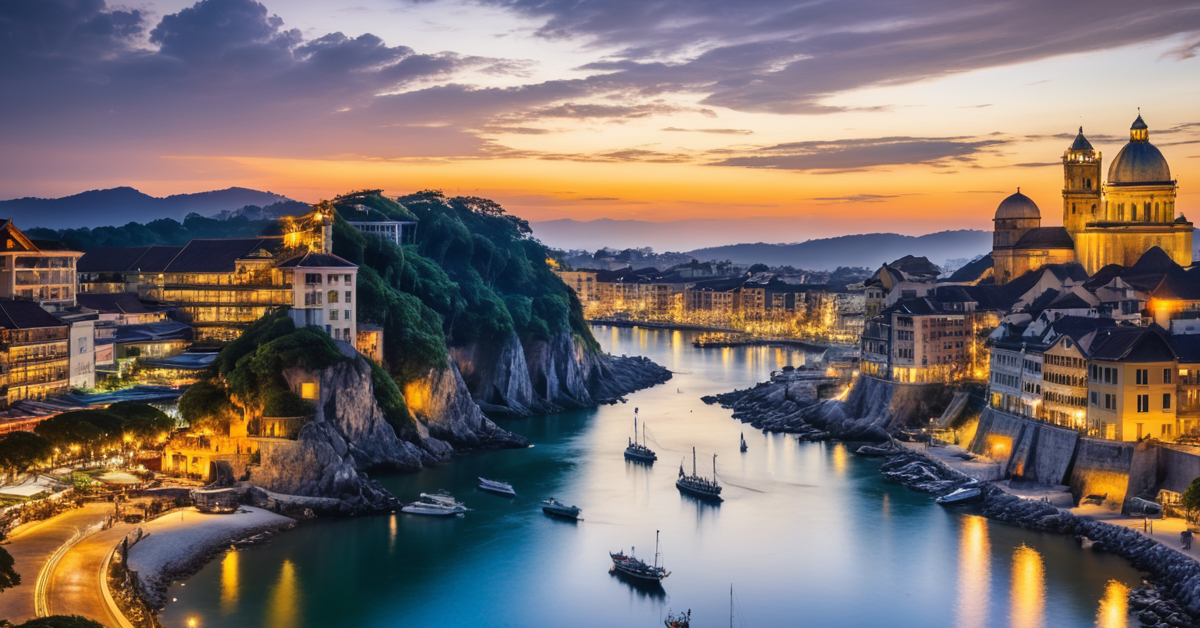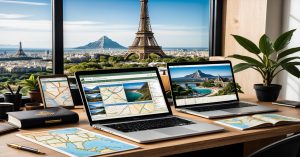Career in Trip Designing: Top 40+ Questions and answers
As a trip designer, you will encounter a variety of questions from clients and industry peers. This article addresses the top 40+ questions most people ask about trip designing, providing detailed answers and insights to help you navigate common inquiries and build trust with clients.
1. What is trip designing?
Trip designing involves creating customized travel experiences tailored to individual preferences and needs. It goes beyond traditional travel planning by offering personalized itineraries and unique experiences.
2. What Does a Trip Designer Do?
A trip designer creates customized travel itineraries based on clients’ preferences, interests, and budgets. They handle all aspects of trip planning, including booking accommodations, transportation, activities, and providing travel advice.
3. How Do I Become a Trip Designer?
Becoming a trip designer typically involves gaining experience in the travel industry, developing strong organizational and communication skills, and building a network of contacts. Many trip designers start by working for travel agencies or as independent consultants.
4. What Skills Are Essential for a Trip Designer?
Essential skills for a trip designer include creativity, attention to detail, excellent communication, organizational abilities, problem-solving, and knowledge of travel technology and industry trends.
5. How Do I Find Clients as a Trip Designer?
Finding clients involves networking, marketing your services, building a strong online presence, and leveraging referrals. Joining professional associations and attending industry events can also help you connect with potential clients.
6. What Should I Include in a Client Consultation?
A client consultation should include discussions about the client’s travel goals, preferences, budget, and any special requirements. Use this opportunity to gather detailed information to create a tailored itinerary.
7. How Do I Create a Customized Itinerary?
Creating a customized itinerary involves understanding the client’s preferences, researching destinations and activities, and organizing the trip details into a cohesive plan. Ensure that the itinerary includes accommodations, transportation, activities, and leisure time.
8. What Tools and Technology Are Useful for Trip Designing?
Useful tools and technology include travel booking platforms, itinerary planning software, customer relationship management (CRM) systems, virtual reality (VR) tools for destination previews, and mobile apps for real-time updates.
9. How Do I Handle Last-Minute Changes to a Trip?
Handle last-minute changes by remaining flexible, providing alternative options, and communicating promptly with clients. Have contingency plans in place and collaborate with reliable local partners to quickly address any issues.
10. How Do I Ensure Client Safety During Travel?
Ensure client safety by providing comprehensive pre-travel briefings, encouraging travel insurance, collaborating with reputable local guides, and developing an emergency preparedness plan. Stay informed about travel advisories and health protocols.
11. What Are the Legal Considerations for Trip Designers?
Legal considerations include obtaining necessary licenses and permits, using clear contractual agreements, securing liability insurance, and complying with consumer protection laws and data privacy regulations.
12. How Do I Price My Trip Designing Services?
Price your services based on factors such as the cost of service, market rates, the value you provide, and desired profit margins. Be transparent about pricing and any additional fees to ensure clients understand the costs involved.
13. What Marketing Strategies Are Effective for Trip Designers?
Effective marketing strategies include developing a strong brand identity, building an online presence through a professional website and social media, content marketing, digital advertising, and networking with industry professionals.
14. How Can I Incorporate Sustainable Practices into My Services?
Incorporate sustainable practices by partnering with eco-friendly accommodations, promoting sustainable transportation options, offering responsible tours and activities, minimizing waste, and educating clients about responsible travel.
15. How Do I Handle Client Feedback and Complaints?
Handle feedback and complaints by actively listening, addressing concerns promptly, and taking corrective action. Use feedback to identify areas for improvement and demonstrate your commitment to client satisfaction.
16. What Are the Benefits of Using Travel Insurance?
Travel insurance provides coverage for medical emergencies, trip cancellations, lost luggage, and other unexpected issues. It offers financial protection and peace of mind for both clients and trip designers.
17. How Do I Stay Updated with Industry Trends and Innovations?
Stay updated by subscribing to industry publications, attending conferences and workshops, participating in webinars, joining professional associations, and engaging with industry peers through networking events and online forums.
18. What Are the Most Popular Travel Destinations Right Now?
Popular travel destinations vary based on trends, seasons, and client preferences.
19. Why is trip designing becoming popular?
With travelers seeking more personalized and meaningful experiences, trip designing has gained popularity for its ability to cater to specific interests, budgets, and preferences.
20. How do you start a career in trip designing?
Begin by gaining experience in the travel industry, developing your skills, building a portfolio, and networking with clients and industry professionals.
21. What are the challenges of trip designing?
Challenges include managing client expectations, balancing creativity with practicality, dealing with unforeseen circumstances, and staying updated with travel trends.
22. What tools do trip designers use?
Trip designers use a variety of tools such as itinerary planning software, travel-booking platforms, destination research resources, and communication tools to facilitate seamless planning.
23. How do trip designers ensure client satisfaction?
By understanding client preferences through thorough consultations, offering personalized recommendations, providing excellent customer service, and being responsive to feedback.
24. What is the difference between a travel agent and a trip designer?
While travel agents focus on booking travel arrangements, trip designers create custom itineraries and experiences tailored to individual preferences, offering a more personalized service.
25. How do trip designers handle budget constraints?
By offering alternative options, negotiating rates with vendors, suggesting cost-effective activities, and transparently communicating budget expectations with clients.
26. How important is cultural sensitivity in trip designing?
Cultural sensitivity is crucial as it ensures respect for local customs, traditions, and etiquette, enhancing the authenticity and enjoyment of the travel experience.
27. What are the benefits of hiring a trip designer?
Benefits include time savings, access to insider knowledge and exclusive experiences, personalized itineraries, and peace of mind knowing that every detail is taken care of.
28. How do trip designers cater to different types of travelers (e.g., families, solo travelers)?
By understanding specific needs and preferences of different traveler demographics, offering suitable accommodations, activities, and ensuring safety and convenience.
29. What are the ethical considerations in trip designing?
Ethical considerations include promoting sustainable tourism practices, respecting local communities and environments, and supporting local businesses and artisans.
30. How do trip designers handle emergencies during travel?
By providing clients with emergency contacts, offering travel insurance options, preparing contingency plans, and maintaining open communication channels throughout the trip.
31. How can trip designers create memorable experiences for clients?
By incorporating unique activities, suggesting off-the-beaten-path locations, arranging special celebrations, and ensuring each aspect of the itinerary reflects the client’s interests and preferences.
32. How do trip designers collaborate with local guides and experts?
By leveraging local knowledge and expertise, collaborating on itinerary development, arranging immersive cultural experiences, and supporting sustainable tourism initiatives.
33. What are some examples of successful trip designs?
Examples include themed itineraries (e.g., culinary tours, wellness retreats, and historical journeys), destination weddings, adventure expeditions, and luxury travel experiences.
34. What are the educational requirements for becoming a trip designer?
While formal education in hospitality, tourism management, or related fields can be beneficial, practical experience, creativity, and industry knowledge are often more critical.
35. How can trip designers adapt to changing travel restrictions and regulations?
By staying updated with travel advisories, maintaining flexibility in itinerary planning, offering alternative destinations, and providing guidance on travel protocols.
36. How do trip designers personalize travel experiences?
By learning about client interests, preferences, and travel motivations, tailoring activities, accommodations, dining options, and excursions to create a memorable and meaningful journey.
37. What are the emerging trends in trip designing?
Trends include sustainable tourism practices, experiential travel, multi-generational travel experiences, remote work and travel packages, and immersive cultural exchanges.
38. What are the financial aspects of trip designing as a career?
Income can vary based on experience, clientele, and services offered, with opportunities for additional income through commissions, service fees, and partnerships with travel providers.
39. How do trip designers build and maintain client relationships?
By providing personalized service, demonstrating expertise and reliability, maintaining open communication, and fostering trust through consistently delivering exceptional travel experiences.
40. What are the prospects for growth and advancement in trip designing?
As travel trends evolve and demand for personalized experiences grows, there are opportunities for expanding services, specializing in niche markets, and developing partnerships globally.
41. How can aspiring trip designers overcome challenges and succeed in the industry?
By investing in continuous learning, networking with industry professionals, gaining practical experience, embracing creativity, and staying adaptable to evolving travel trends.
42. How Are Payments Handled in Trip Designing?
Payments for trip designing services are usually made through secure online platforms, ensuring safety and convenience for travelers.
43. Are Trip Designers Licensed?
Reputable trip designers are typically licensed and adhere to industry standards and regulations to provide trustworthy and reliable services
This article aims to provide comprehensive insights into trip designing, addressing common queries and offering guidance to aspiring professionals seeking to excel in this dynamic and rewarding field. Understanding these fundamental aspects can pave the way for a successful career as a trip designer, creating memorable travel experiences that delight clients and enrich their journeys.




